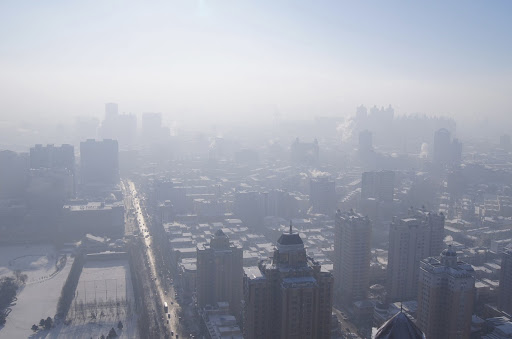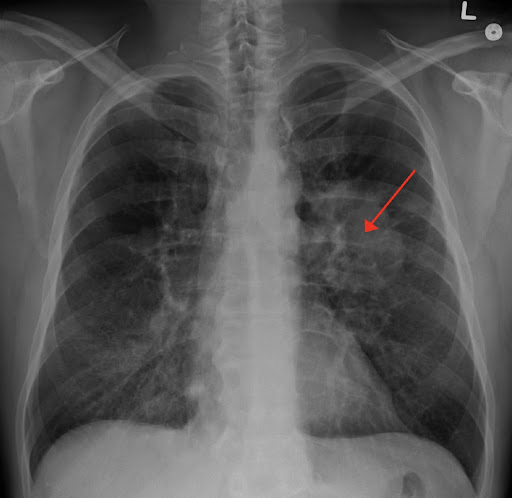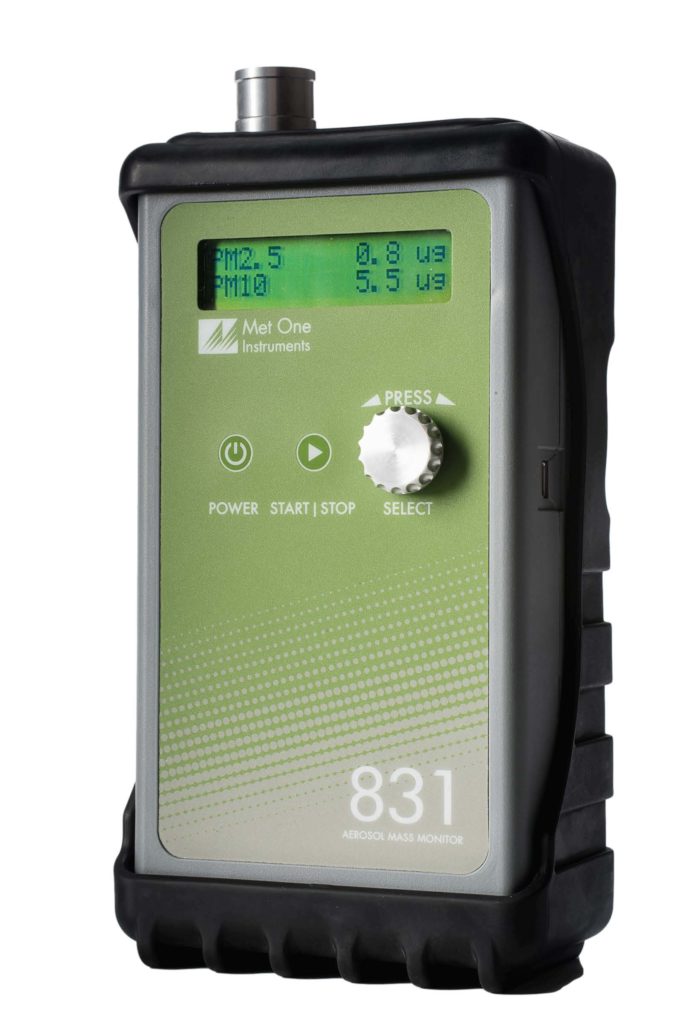Welcome to the Met One Instruments, Inc. blog — join us to examine how air pollution is related to lung cancer & the history of this awareness month.
November has been Lung Cancer Awareness Month since the early 1990s. One of the reasons this awareness month was created was to shed light on the stigma about this disease. The falsehood is that the only people affected by it are smokers. While smoking tobacco products is a leading cause, another culprit has also had an increasing and disturbing effect –– air pollution.

Lung Cancer Awareness Month was created to encourage people to be vigilant about their health and recognize the signs of trouble. An early diagnosis is critical to better survival rates. Unfortunately, many people do not take their symptoms seriously or wait to seek care until too late.
We intend to encourage people to seek medical advice sooner. Early diagnosis offers the best chance of treating this disease effectively. Let's get started with five facts you should know about Lung Cancer in 2021….
Fact #1 –– Did you know that Lung Cancer is the leading cause of cancer deaths globally?
Lung cancer is the leading cause of cancer-related deaths worldwide, with more than 2,000,000 people diagnosed each year. Educating the public about the complexities of lung cancer and the variety of different people affected will empower our communities to seek help early. In turn, this provides them with more effective care and better outcomes.
“It is a common misconception that lung cancer is only a smokers’ disease. However, over half of those diagnosed are former smokers or people who have never smoked. This misconception has been linked to poor outcomes, due to factors such as delay in seeking treatment, disease-related distress, reduced social support and lower quality of care.” –– roche.com

Fact #2 –– Did you know that lung cancer is responsible for more deaths in the United States than the following three causes of cancer-related deaths combined?
This is another reason to stay vigilant regarding your health. Lung cancer is more prevalent than colorectal cancer, breast cancer, and pancreatic cancer combined. Be aware there are two types of lung cancer –– small cell and non-small cell. Non-small cell lung cancer is most prevalent, accounting for roughly 84% of cases.
“According to estimates by the National Cancer Institute’s Surveillance, Epidemiology, and End Results (SEER) Program, 235,760 patients will be diagnosed with lung and bronchus cancer and 131,880 patients will die of the disease in the United States in 2021.” –– American Association for Cancer Research

Fact #3 –– Did you know that even short-term exposure to air pollution can trigger mutations causing lung cancer?
Air that might appear clean may be compromised with particulate matter, which is why it is essential to pay attention to the Air Quality Index (AQI), easily accessible and available on most cell phone weather applications. For instance, if you live in the city and need to exercise outdoors, choose to run or exercise in a park away from exposure to fossil fuel exhaust released by gas-powered vehicles.
“Particulate pollution is a tiny particle that comprises acids, organic chemicals, metals, soil and dust. The ultra fine particles not only wade through the lungs, they can also easily enter our bloodstream and cause harm. These are mixtures of solid and liquid that are emitted largely by vehicles (nitrates), power plants, industries (sulphur dioxide). It can also be natural environmental (radon). Essentially, the air may appear clean as we cannot see these particles, but they all cause cancer,” –– Dr. Niti Raizada

Fact #4 –– Did you know that lung cancer occurs when local cells divide uncontrollably, which causes tumors to grow?
When cells begin to divide in this manner, it can reduce your ability to breathe, and cancer may spread to different parts of your body. Normal cells die at a particular stage in their life, preventing the build-up of too many cells. Cancer cells continue to grow and multiply, creating tumors. Anyone can develop lung cancer. However, smoking or exposure to second-hand smoke, chemicals, and other toxins puts you at an elevated level of risk.
While smoking is a significant factor in developing lung cancer, not everyone diagnosed with lung cancer has a history of smoking. It is a misconception that lung cancer is only a smokers' disease. This misunderstanding stops people from taking early warning signs seriously.
Over half of those diagnosed with lung cancer are former smokers; however, 10-15% have never smoked a cigarette. An article published in the US National Library of Medicine National Institutes of Health states, “Primary factors closely tied to lung cancer in never smokers include exposure to known and suspected carcinogens including radon, second-hand tobacco smoke, and other indoor air pollutants.” Watch for early warning signs, and remember that people with lung cancer may not have any notable symptoms until a later stage. Symptoms can resemble those of respiratory infection.
📄 Possible symptoms can be…
- Changes to your voice, such as hoarseness
- Recurring chest infections, such as bronchitis or pneumonia
- Swelling in the lymph nodes in the middle of the chest
- Lingering/worsening cough & chest pain
- Shortness of breath or wheezing
📃 More severe symptoms include…
- Severe chest pain
- Bone pain & fractures
- Headaches
- Coughing up blood
- Blood clots
- Appetite loss or weight loss
- Fatigue

Fact #5 –– Do you know how scientists concluded particle pollution causes lung cancer?
In addition to looking at scientific journals published about the topic, in 2013, the World Health Organization also examined the case of an 8-year old girl in China who was diagnosed with lung cancer. Due to notably hazardous air pollution where the child lived, a doctor concluded that her lung cancer directly resulted from air pollution.
➡️ It is extremely rare for a child to be diagnosed with lung cancer — the average age when diagnosed is 70.
The report of the eight-year-old girl's diagnosis in 2013 came after choking smog enveloped the northeastern city of Harbin where she lived, bringing flights and ground transport to a standstill. Schools in the area shut down for several days. Visibility in some areas was reduced to less than 50 meters.

At the height of the smog in Harbin, the city's levels of PM2.5, which is the smallest commonly measured, most dangerous type of airborne particle — reached 1,000 micrograms per cubic meter. That is 40 times the World Health Organization's recommended standard. High levels of PM2.5 are linked to health problems, including lung cancer and heart disease.
“We know that fine particles can enter deep into the lungs and are linked to lung cancer, and even more research needs to be done on the precise way that these particles start the cancerous process within the lungs.” –– Norman Edelman MD & Senior Scientific Advisor to the American Lung Association
Since 1989, Met One Instruments, Inc. has been dedicated to producing the standard in air pollution monitoring products. One such product is the handheld Aerocet 831 Aerosol Mass Monitor (pictured above) –– ideal for testing air quality on the go in indoor environments. Have you considered what is in the air you are breathing?
Our company creates air quality measurement instruments to help scientists, engineers, and everyday people keep the air safe for all of us. Would you like to learn more about what we do for monitoring air pollution? Check out the following articles from our blog!

🔗 Read “BACK TO SCHOOL: How Does Air Quality Affect our Children’s Health & Ability to Learn at School?”

🔗 Read “MAY 2021 – EPA REPORT TESTS NEW AIR POLLUTION PARTICLE SENSORS VS. MET ONE INSTRUMENTS, INC. BAM 1020 FEM PM2.5”



